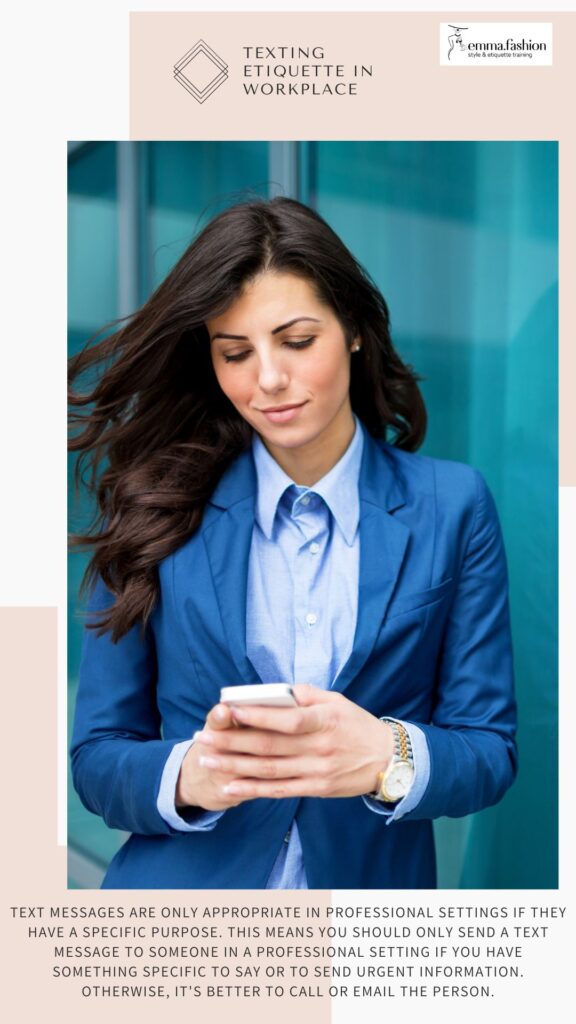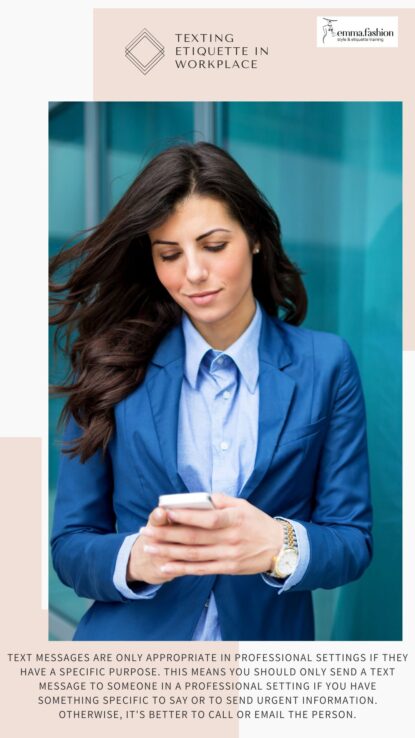How To Properly Use Texting In The Workplace
In today’s fast-paced and technology-driven world, texting has become an integral part of our daily lives. However, while it can be a convenient and quick way to communicate, it’s important to be mindful of the professional environment in the workplace. This is why it’s crucial to understand and follow texting etiquette when communicating with colleagues, clients, and superiors.
In this article, we’ll go over guidelines for when it’s appropriate to send texts in the workplace, how to use texting as a professional tool, and tips for avoiding common mistakes that can harm your professional reputation. Whether you are new to the workplace or a seasoned professional, these tips will help you communicate effectively and professionally through texting.
When it’s appropriate to send texts in the workplace
- Use company-approved communication channels: If the company has a preferred method of communication, use it instead of personal texting.
- Respect work hours: Avoid sending texts outside of regular work hours unless it is an emergency.
- Consider the content: Make sure the text is professional and relevant to work-related matters. Avoid personal or sensitive topics.
- Use proper tone: Use a neutral and respectful tone, and avoid slang or emojis.
- Avoid group texting: Limit group texts to work-related matters and keep the group small.
- Confirm receipt: When sending important information, confirm receipt with the recipient to ensure they received and understood the message.
- Consider privacy: Be mindful of sensitive information and ensure it is transmitted securely.
- Follow up with a call or email: Texting is not always the best method of communication. If a matter is complicated, follow up with a call or email.
How to use texting as a professional tool
- Be concise and clear: Texting should convey brief, direct messages. Keep the language professional and avoid abbreviations or emojis.
- Use texting to communicate time-sensitive information: Texting is an excellent tool for delivering important updates or reminders that require a prompt response.
- Confirm details: Use texting to confirm details of a meeting or project, such as location, time, and objectives.
- Follow up on tasks: Use texting to follow up on tasks and check the status of projects to ensure everyone is on track.
- Build rapport: Texting can also build rapport with colleagues, clients, and superiors by exchanging greetings or wishing them a good day.

Tips for avoiding common mistakes when sending a text message:
- Avoid text-speak: Use proper grammar and spelling, and avoid abbreviations or slang.
- Watch your tone: Texting can be easily misinterpreted, so be mindful of your tone and the words you choose.
- Don’t text confidential information: Avoid texting confidential or sensitive information, as it may not be secure.
- Don’t send personal texts at work: Keep your personal texting separate from work-related texting to avoid distractions and maintain professionalism.
- Don’t send negative messages: Avoid sending negative or critical messages through texting, as it can damage relationships and professional reputation.
- Respect privacy: Don’t forward texts without permission, and respect the privacy of others by not sharing their texts without their consent.
- Don’t send too many texts: Avoid overloading others with excessive texting, as it can be annoying and disruptive.
- Don’t text in a group unnecessarily: Limit group texting to work-related matters and keep the group small to avoid confusion and irrelevant responses.
- Proofread before sending: Always proofread your texts to avoid sending messages with typos or errors.
Remember, texting is just one tool in your professional communication arsenal. It should be used in conjunction with other methods, such as email and face-to-face communication, to ensure effective and professional communication in the workplace.




Comments